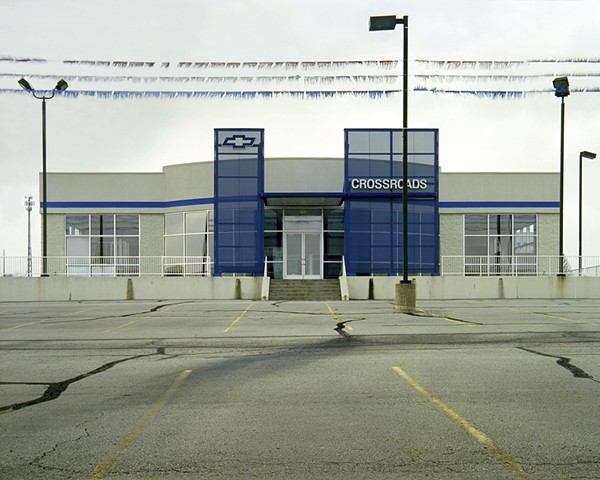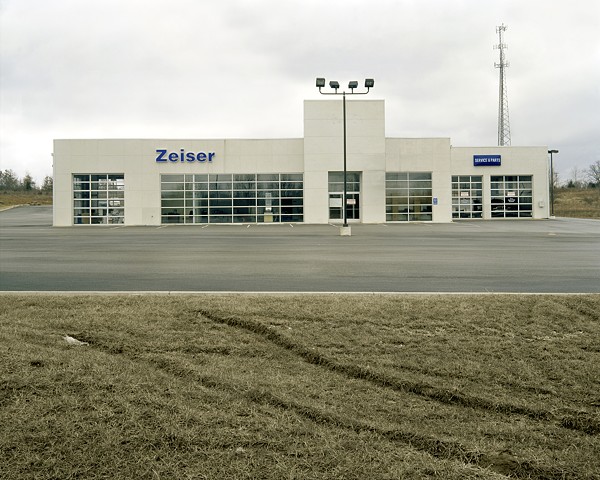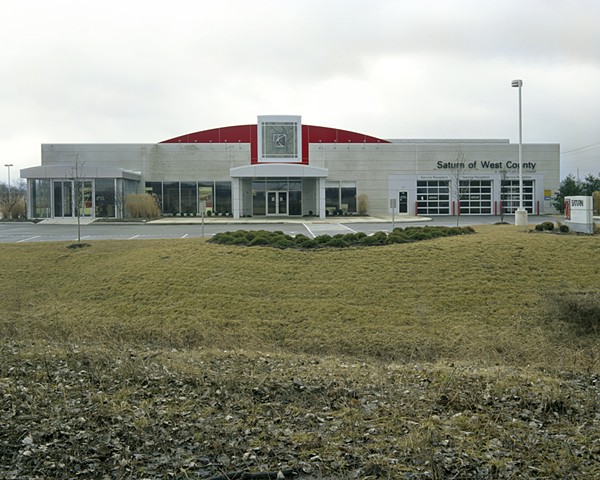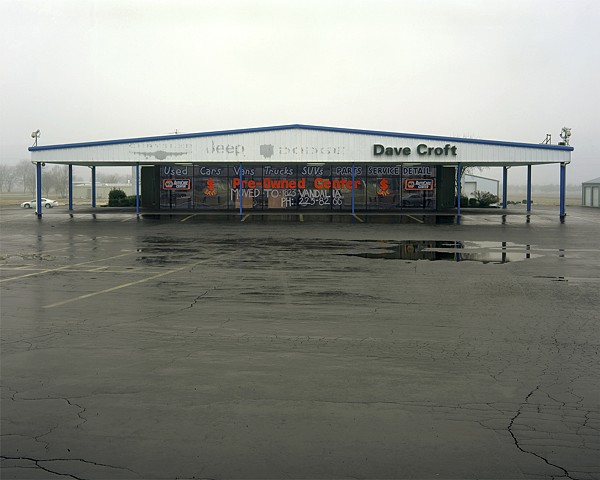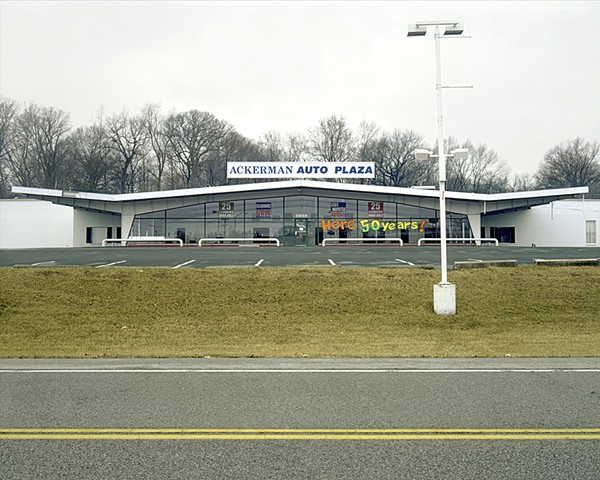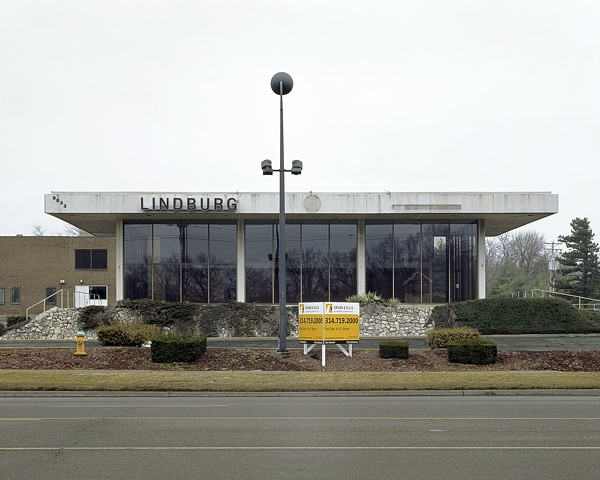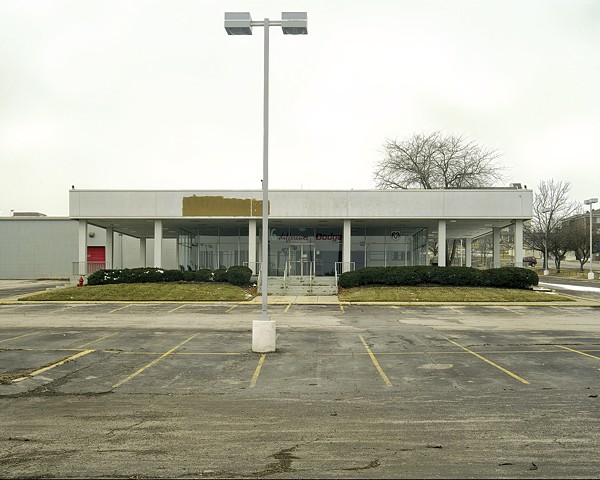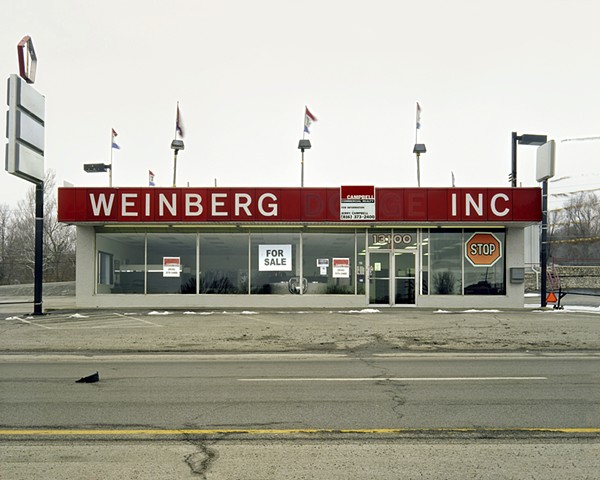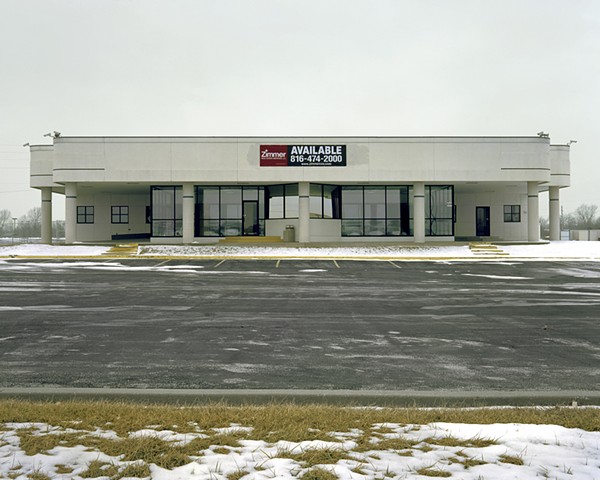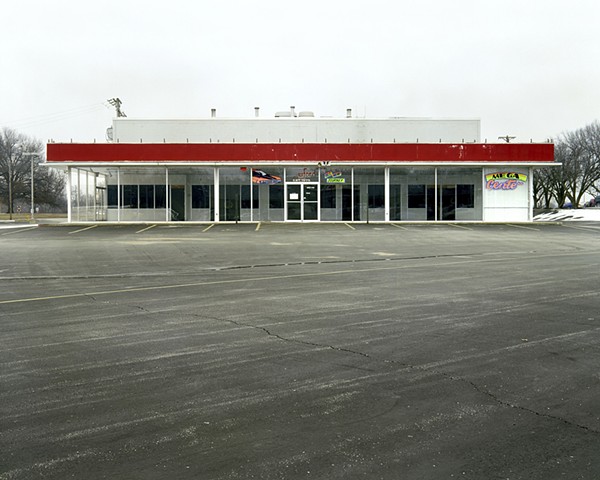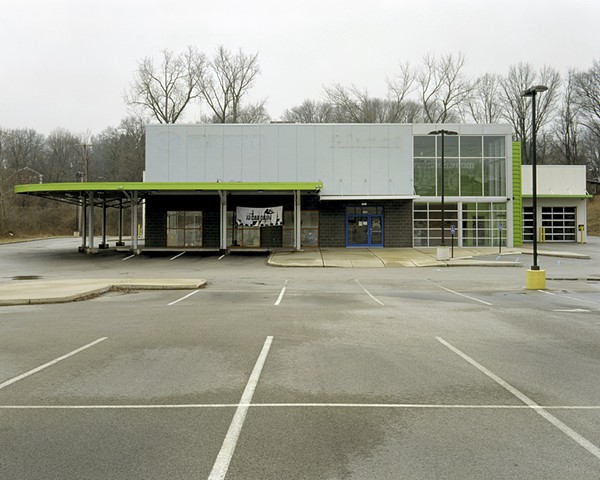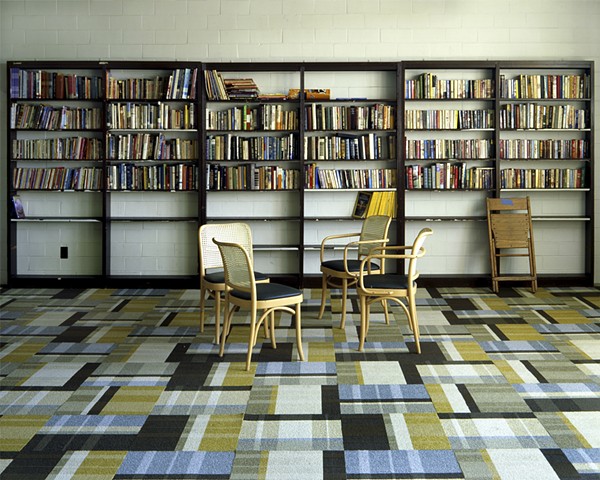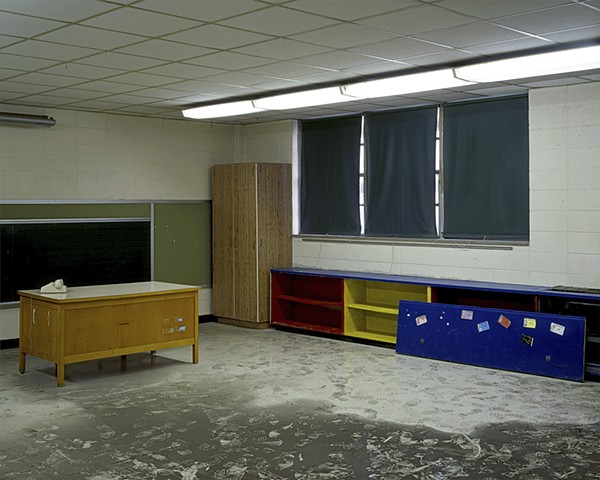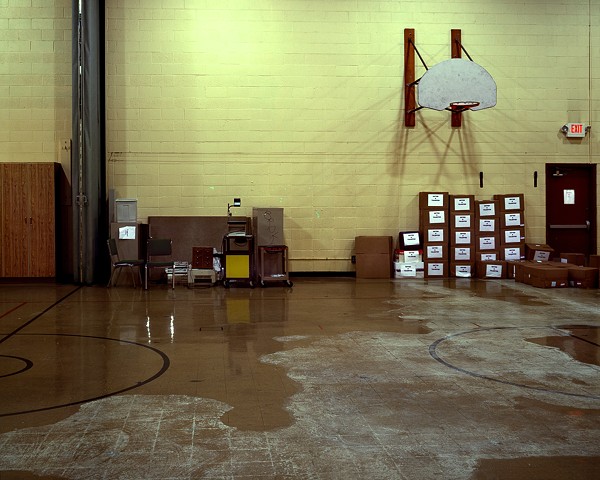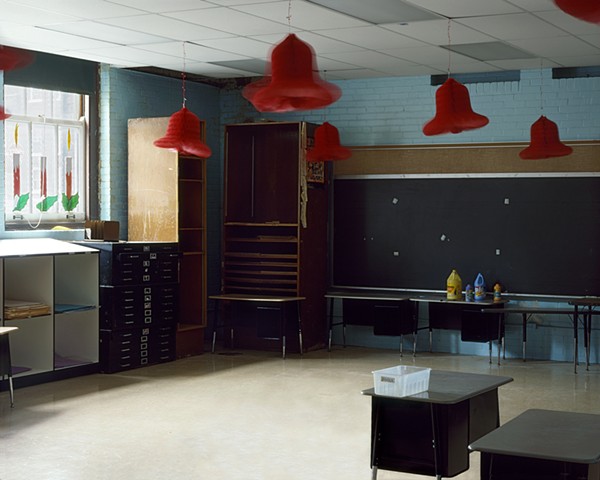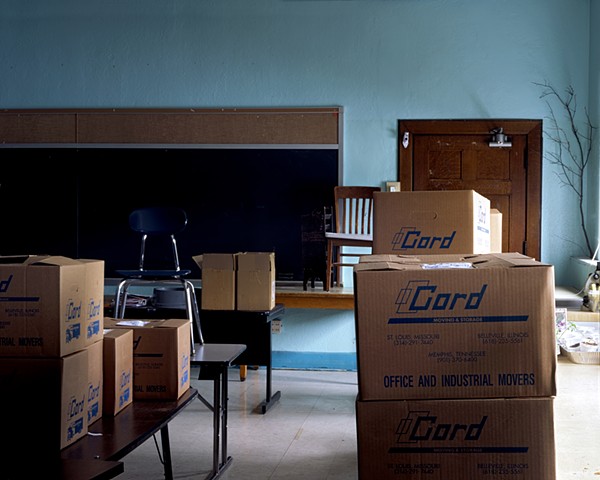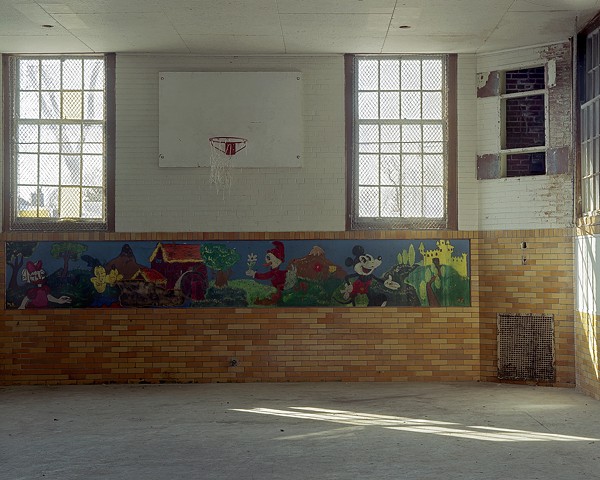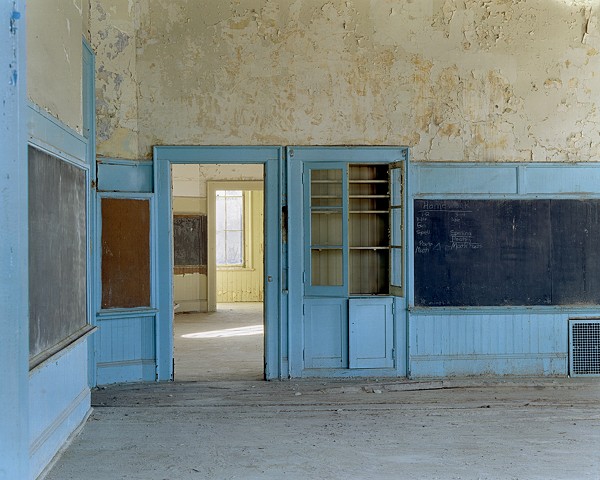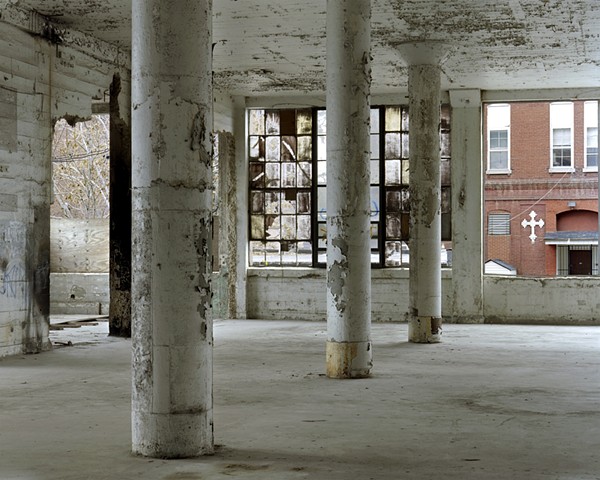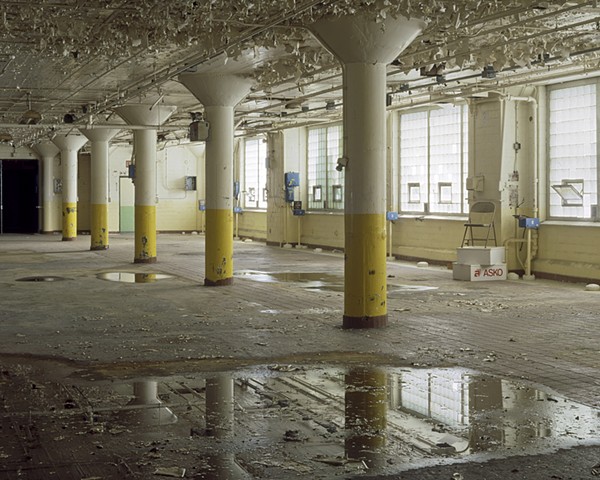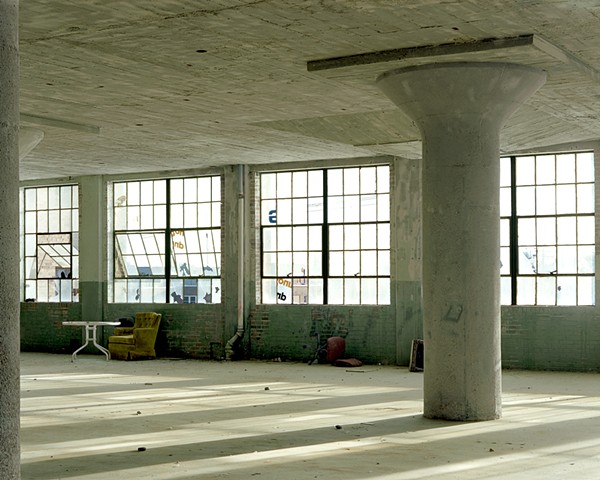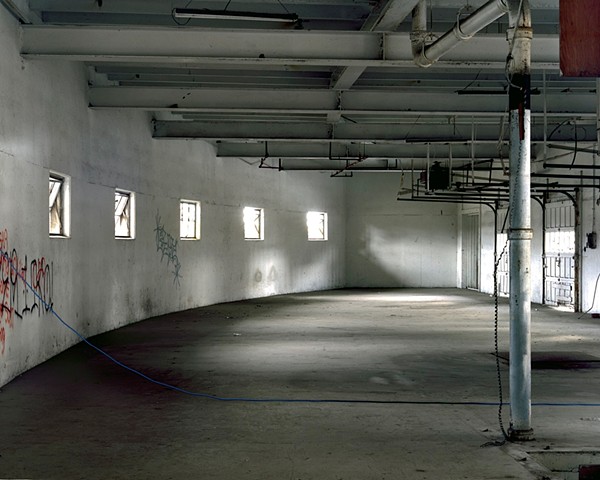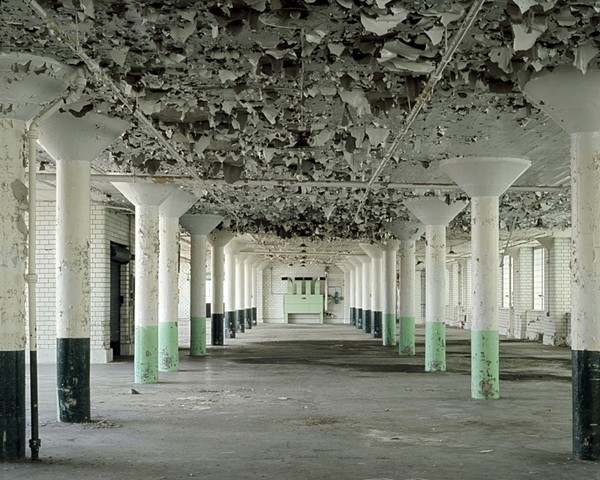Vacated
Nothing is more essential to our being than our building practices given that the world into which we are being is always a built world.
- Robert Pogue Harrison
Understanding the idea of place helps us figure out who we are in relationship to the world. Buildings and architecture are critical components of our communities; we experience life through our built environment. The socioeconomic system of capitalism informs how we ascribe meaning to these buildings because it generates a variety of economic forces that determine when buildings are useful and when they become obsolete. Therefore, it can be argued that our economy, which is driven by a capitalist system, greatly shapes our sense of place.
I have chosen to explore how economic forces impact our sense of place by photographing three distinct but related series: abandoned factories, former schools, and closed car dealerships. Focused around specific building types, each of these series visualizes the consequences for communities when economies experience drastic decline. As corporations choose to hire cheaper labor in other countries or implement production modes that require different structures, as people move from our urban core to newer suburbs, and as producers of the ultimate symbol of personal freedom in America (i.e. G.M. and Chrysler) falter after years of poor business choices, these buildings become monuments to the ideals of the past. While each of these series examines place in a unique way, the common underlying theme is the idea that changes in the broader economy evidenced by the transitions of buildings into obsolescence effect our communities.
As pictured, each of the factories, schools, and car dealerships is in a state of transition, yet has a distinct history. The images preserve this history, as well as communicate that the future of these structures is uncertain. This, indeed, is a characteristic of photography, to capture time at a specific point in history for recollection. Some of these buildings will be converted to a new use, perhaps some will be demolished, and some will remain vacant for years to come. The markings left behind tell the story of what the buildings were and how they functioned.
